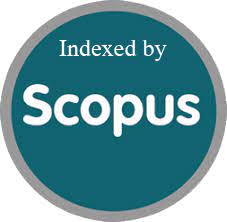A Comparative Performance Analysis of Various Machine Learning Techniques in Breast Cancer Detection.
DOI:
https://doi.org/10.52783/jns.v14.3563Keywords:
Recall and F1 Score, Precision, Accuracy, Random Forest, Naïve Bayes, KNN, Decision Tree, Support Vector, Logistic Regression, Breast CancerAbstract
Cancer, a nemesis of humankind since eternity is a disease against which a relentless war has been waged by medical researchers, all guns blazing but with comparatively little success. There are more than 200 types of cancer which are known to occur in humans and breast cancer is the second most common form of cancer. This disease poses a daunting challenge to medical practitioners and every year copious numbers of fatalities occur due to this lumpy killer. Its detection at an early stage raises the chances of survival of the patients’ manifolds. Use of artificial intelligence and machine algorithms has come in handy for detecting various kinds of diseases including breast cancer. Though in a nascent stage, these algorithms are turning out to be pivotal and nifty tools for medical practitioners to unravel and identify this fiendish enigma at an early stage. In this study, six classifiers i.e. Logistic Regression, Decision Tree, Random Forest, Support Vector, KNN and Naïve Bayes have been utilized and trained on Wisconsin data set to predict the occurrence of breast cancer. A comparative analysis of the performance of these algorithms have been done on the anvil of accuracy, precision, Recall and F1 score. On the basis of the empirical values obtained, it is evident that Random Forest is the most appropriate ML technique to detect the breast cancer.
Downloads
Metrics
Downloads
Published
How to Cite
Issue
Section
License

This work is licensed under a Creative Commons Attribution 4.0 International License.
You are free to:
- Share — copy and redistribute the material in any medium or format
- Adapt — remix, transform, and build upon the material for any purpose, even commercially.
Terms:
- Attribution — You must give appropriate credit, provide a link to the license, and indicate if changes were made. You may do so in any reasonable manner, but not in any way that suggests the licensor endorses you or your use.
- No additional restrictions — You may not apply legal terms or technological measures that legally restrict others from doing anything the license permits.










